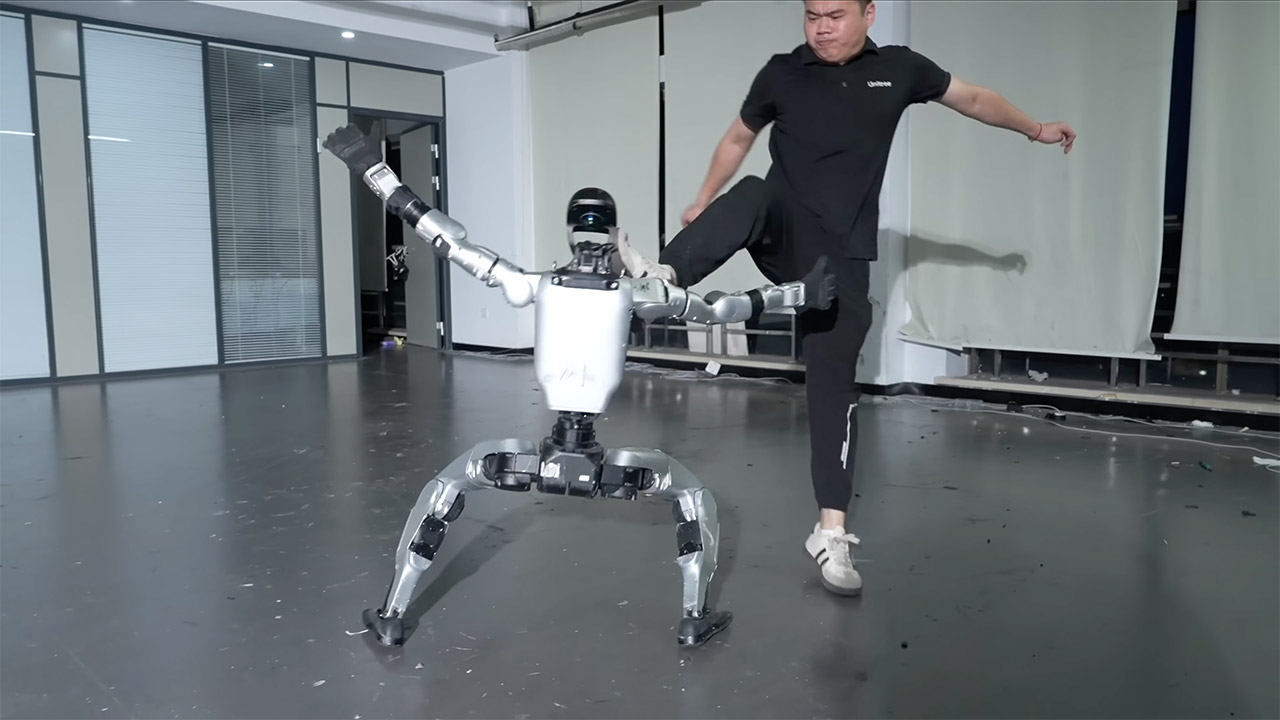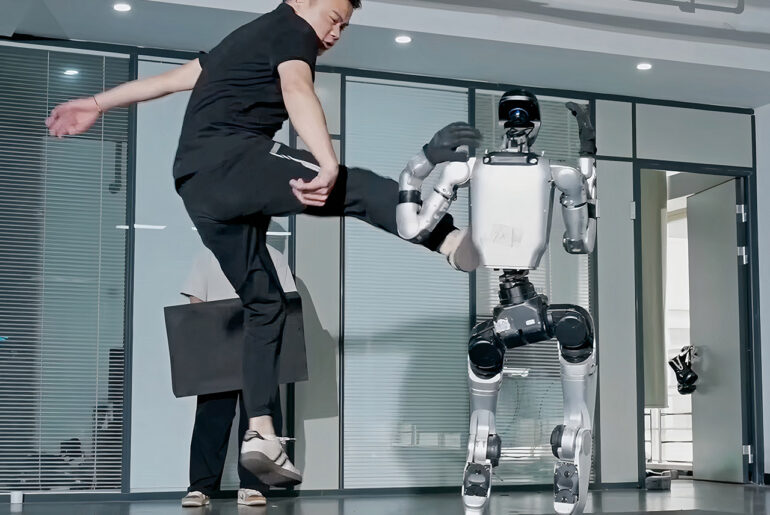
Engineers at Unitree decided to test their latest robot upgrades the old fashioned way: by hitting it in the face. In a recent demo, the company’s G1 humanoid robot gets a chest-high kick and back shove, and falls each time but gets up before the dust settles. That’s thanks to a new feature called Anti-Gravity mode, which improves the robot’s balance.
Behind those smooth recoveries are the G1’s eyes and joints, working in perfect sync. Depth cameras and 3D LiDAR sensors map the world around it in real time, providing data that allows the robot to anticipate shifts in its center of gravity before it fully commits to a fall. Multiple motors at each joint give the extra push needed to offset sudden forces, allowing the robot to change its posture on the fly, like leaning into a push or twisting away from an impact.
- LEGO SET FOR ADULTS – The WALL-E and EVE (43279) building set offers adults 18 years old and up an immersive construction challenge featuring...
- 4 DISNEY PIXAR CHARACTERS – Builders can create iconic robots WALL-E, EVE, M-O and Hal from the hit movie—each with authentic functionality like...
- MINDFUL BUILDING EXPERIENCE – This detailed construction set lets builders practice advanced construction techniques for an immersive and relaxing...

The G1 nails it, as it gets a side kick and doesn’t fall sideways; instead it absorbs the momentum, steps wide for stability and resets. Since its debut last year, the robot has been $16,000. It’s aimed at labs and factories where adaptability could mean the difference between a halted production line and flawless operation.

Watching the G1 get beaten up shows more than just toughness. Early in the clip it jogs across the floor, dodges a half-hearted swipe and gets dropped by a direct hit. Its knees bend fast to absorb the impact and then straighten with a burst of torque, lifting the whole 77 pounds in one smooth move. Later tests offer variety, like a running kick that sends it sliding several feet or a double tap shove that requires a mid-air correction. Upon impact the robot assesses its footing and uses the LiDAR to find the fastest way up.










